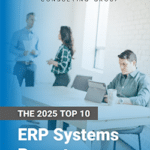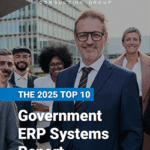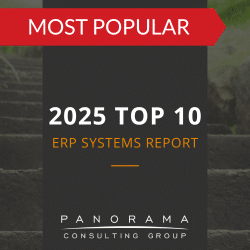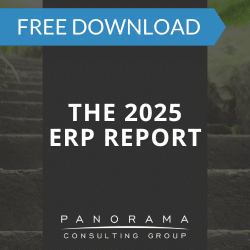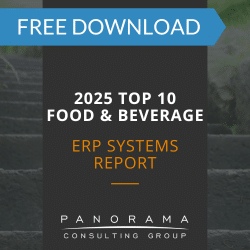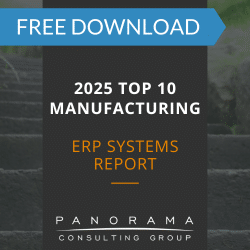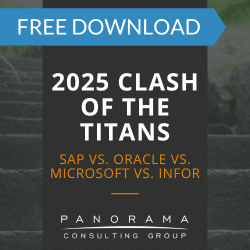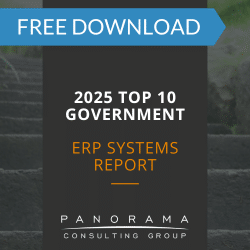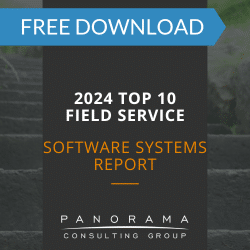- Alignment between your HR system and your ERP strategy is critical for government organizations.
- Effective government ERP system integration depends on coordination across HR, finance, procurement, and IT.
- Successful public sector ERP planning focuses on shared data standards, consistent workflows, and careful software selection.
- A government software evaluation process should reflect agency-wide goals, policy mandates, and long-term IT strategy.
Modernizing HR systems has become a common starting point for government IT initiatives. Increasingly, public sector organizations want to directly tackle workforce efficiency, compliance, and morale.
However, selecting a human resources system in isolation is a strategic misstep. If you’re responsible for digital modernization in a government agency, you already know the stakes: siloed solutions create long-term integration headaches, budget overruns, and political fallout.
HR technology selection must be approached as part of a broader government ERP system integration effort. In this post, we’re exploring how to align human resource management with your ERP strategy to support your institution’s long-term goals.
2025 Top 10 Government ERP Systems
This independent report reveals what vendors our consultants most frequently consider for public sector clients. These vendors enable states, municipalities, and other public sector entities to be more data-driven.
Why Government HR Software Demands Strategic Alignment
Government agencies rarely have the luxury of rapid experimentation. Technology projects are expected to deliver predictable outcomes, operate within rigid budgets, and respect evolving compliance frameworks.
HR systems are susceptible to even more scrutiny because they’re highly visible. Payroll failures, for instance, instantly affect employees’ trust.
When HR modernization is approached as a standalone project, it often leads to failures related to overlapping functionality, disconnected data sources, and systems that can’t effectively communicate with one another.
That’s why public sector leaders must ensure that their systems across HR, finance, procurement, and workforce management operate as one unified ecosystem.
HR Software Selection Should Be Guided by Organization-Wide Goals
HR departments tend to focus on feature depth—benefits administration, employee self-service, onboarding automation. However, if you evaluate HR systems in isolation, you might select a system that functions in the short term but doesn’t scale with your evolving ERP strategy.
Here’s how to ensure your government software evaluation supports your broader ERP strategy:
1. Anchor the RFP in agency-wide operational and policy priorities.
Instead of focusing exclusively on HR-specific requirements, frame your request for proposal (RFP) in terms of software evaluation criteria that reflect bigger picture concerns. This could include interoperability, scalability, vendor viability, or alignment with digital service delivery models.
For example, a city government might require that the HR system support mobile-responsive employee self-service portals that integrate with the city’s broader digital services platform. This would allow employees to manage benefits, submit timecards, and track training requirements from the same portal they use to access municipal announcements, IT support, and internal service requests.
2. Assess total cost of ownership, not just upfront costs.
This means evaluating integration costs, data migration complexity, staff training, ongoing support needs, and eventual transition scenarios. Overlooking hidden costs can cause you to cut corners on activities that support your agency-wide goals, whether this includes meeting federal and state reporting mandates or delivering consistent HR services across multiple departments and jurisdictions.
3. Use process benchmarking across departments.
Take a close look at how common processes—such as hiring approvals, time entry, leave requests, or compliance reporting—are currently managed across different departments. Often, these activities follow inconsistent workflows, rely on manual steps, or depend on department-specific tools.
Our government ERP consulting team often tells clients to document process variations in a centralized workflow map, then use that map to identify where standardization can improve alignment between HR and organization-wide planning, budgeting, and service delivery.
4. Evaluate vendor commitment to public sector innovation.
Many commercial HR vendors pivot slowly to meet government needs. Look for proof that your shortlisted providers are investing in solutions tailored to the regulatory and organizational complexity of public service environments. Avoid becoming a testing ground for new features that have not been battle-tested in government use cases.
Integration Must Be Prioritized from the Start
Public sector ERP planning should start with an acknowledgment that HR systems don’t live in a vacuum. They touch identity management, time tracking, learning, benefits, budgeting, and more.
Too often, government agencies commit to an HR platform before understanding how it will communicate with existing or planned ERP systems. This creates a patchwork of manual workarounds, middleware contracts, and delayed rollouts.
A smarter approach begins with envisioning how systems will share data and processes over time, regardless of who makes the software.
Here are key steps for planning for integration from the outset:
1. Establish a cross-functional governance body.
Bring IT, HR, finance, procurement, and compliance to the table early. This group must have both decision-making authority and clear accountability for defining integration standards and data governance protocols.
For example, a water district might establish a governance body to define shared data fields—such as employee classifications, job codes, and cost centers—to be used consistently across HR, payroll, and asset management systems. This would ensure that workforce data aligns with capital project tracking and utility billing functions.
2. Prioritize data architecture design before software demos.
Map data flows between HR, finance, payroll, and analytics functions. Understand which systems need to share data instantly and which can exchange it in scheduled batches. This prevents overreliance on vendor promises and keeps your system strategy grounded in business requirements.
3. Rely on middleware only as a bridge—not a foundation.
Middleware should be a short-term tactic, not a permanent integration layer. If the HR system you’re considering requires extensive third-party connectors to function with your ERP backbone, you may want to revisit your selection criteria.
Our enterprise software consultants always advise clients to look for native functionality that supports real-time data exchange between HR, payroll, finance, and budgeting systems without requiring custom-built integrations.
4. Demand vendor clarity on interoperability.
Ask prospective HR vendors to show exactly how their system connects and works with the ERP platforms you currently use or plan to implement. Vague assurances about “robust APIs” are not enough. You need use-case-level transparency on authentication, data synchronization, and error resolution protocols.
For instance, you could request a live demonstration showing how timekeeping entries made in the HR system are validated, transferred, and posted within your general ledger or grant reporting modules—without requiring manual re-entry or batch file uploads.
5. Integrate cybersecurity planning into system design.
HR data includes sensitive personal information. If that data passes through multiple layers during processing—between timekeeping apps, payroll systems, and analytics dashboards—your risk surface expands significantly. A well-integrated ERP environment allows you to apply the same security rules and access controls across every system and application.
Learn More About Government HR System Integration
Technology ecosystems in the public sector are becoming more entangled, not less. If you’re leading a modernization effort, your credibility rests on implementing HR solutions that hold up to audit, scale with policy changes, and support your workforce without surprises.
That’s why independent ERP selection matters. Vendor-neutral guidance helps your agency cut through the hype, negotiate smart contracts, and plan for the full lifecycle of your systems.
Our ERP software consultants can help you evaluate government HR systems as part of your broader ERP roadmap, so you avoid the all-too-common trap of “good system, wrong strategy.” Aligning your HR and ERP strategies is the difference between digital transformation that sticks and modernization that fragments.
